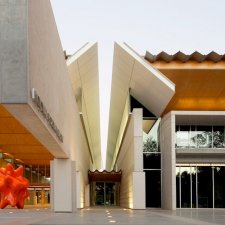- About us
- Support the Gallery
- Venue hire
- Publications
- Research library
- Organisation chart
- Employment
- Contact us
- Make a booking
- Onsite programs
- Online programs
- School visit information
- Learning resources
- Little Darlings
- Professional learning
Oil on canvas. 39 3/4 in. x 31 1/2 in. (1011 mm x 802 mm).
Purchased with help from the Pilgrim Trust, 1984. NPG 5727
Source: npg.org.uk
From Paris and Helen of Troy to Romeo and Juliet, tales of forbidden and tragic love have long captured the imagination. The consequences for their star-crossed lovers are often catastrophic, and, in literature, these stories tend to end in the death of one or both of the lovers. The power of love to convince people to transgress social expectations or take extreme risks is not confined to myth and fiction, and history is rife with real life love stories that scandalised society or ended in tragedy.
This work by Van Dyck – arguably one of the finest posthumous portraits ever painted – mourns a lost love, keeping the connection between the sitter and viewer alive in the face of a tragic death. Lady Venetia Stanley was the subject of much gossip, and was said to have been the mistress of Edward Sackville, 4th Earl of Dorset, while betrothed to Sir Kenelm Digby. The tale of the Digbys’ romance and the restoration of Venetia's virtue are detailed in Sir Kenelm’s memoirs, Loose Fantasies. After nine years of marriage, she died suddenly – quite possibly after drinking her husband's 'viper wine', a concoction reputed to preserve beauty. Digby mourned her loss extravagantly, commissioning several portraits as posthumous tributes to his wife, of which the Van Dyck painting is probably one. To keep her memory alive (and feel her continued presence) Sir Kenelm is thought to have slept with a portrait of Venetia in his bedroom for the rest of his life.



Visit us, learn with us, support us or work with us! Here’s a range of information about planning your visit, our history and more!



We depend on your support to keep creating our programs, exhibitions, publications and building the amazing portrait collection!



Information on location, accessibility and amenities.